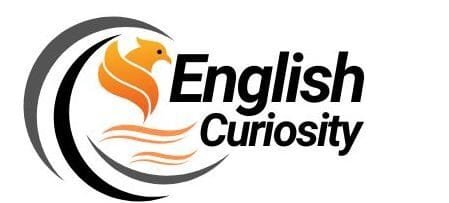2025 NTA UGC Net History Online Mock Test 8 held in India: 25 multiple-question answers from the history topic of the UGC NET Exam are given below.
NTA UGC Net History Online Mock Test 8
| Mock Test Set | 8 |
| Question Type | MCQ |
| Medium | Online |
| Subject | History |
| Exam | UGC Net |
| Question | 25 |
| Marks | 1 |
First Part: UGC Net History Online Mock Test
1. The most active trade contacts between the Harappan civilization and Mesopotamia existed during the period:
- (a) 2350 BC-1770 BC
- (b) 2500 BC–1500 BC
- (c) 2000 BC–1500 BC
- (d) 2480 BC–2300 BC
Ans. (a) 2350 BC–1770 BC
2. The largest building at Mohenjodaro is:
- (a) The great bath
- (b) The granary
- (c) The audience chamber or pillared hall
- (d) The collegiate building
Ans. (b) The granary
3. The earliest evidence of institutionalized burial has been found at
- (a) Mehrgarh
- (b) Anjira
- (c) Harappa
- (d) Kili Gul Muhammad
Ans. (a) Mehrgarh
4. What is common among Harappa, Mohenjodaro, Allah Dino, and Kunal?
- (a) All are in Pakistan now
- (b) All have yielded hoards of precious metals and semi-precious stones
- (c) All were major cities
- (d) All have similar structural patterns
Ans. (b) All have yielded hoards of precious metals and semi-precious stones
5. According to a hypothesis, Harappa functioned as a ‘gateway city’. Which two other cities could be kept in this category?
- (a) Mohenjodaro
- (b) Rakhigarhi
- (c) Dholavira
- (d) Suktagendor
Choose the right answer from the following:
- (a) 1 and 2
- (b) 1 and 4
- (c) 3 and 4
- (d) 2 and 3
Ans. (a) 1 and 2
Second Part: UGC Net History Online Mock Test
6. Which one of the following is not a view of S. M. Wheeler?
- (a) The occurrence of timbers in the baked brick construction in the early phase of Mohenjodaro suggests that the master builder concerned was a foreigner accustomed to methods appropriate to a drier climate and inexperienced industrial conditions.
- (b) From Mesopotamia, the Mature idea of civilization reached the Indian coast and the Indus Valley by an easy sea route and perhaps by land, to be there according to local tastes and circumstances.
- (c) Mohenjodaro’s decline was long drawn out and progressive and the final fall was catastrophic
- (d) There is a likelihood of immediate or wholesale colonization of the Indus region from Sumer
Ans. (d) There is a likelihood of immediate or wholesale colonization of the Indus region from Sumer
7. Which one of these is the most recurring ‘field symbol’ on Harappan seals?
- (a) Unicorn
- (b) Bull
- (c) Rhinoceros
- (d) Composite animals
Ans. (a) Unicorn
8. Which one of the following has not been found in cemetery R 37 at Harappa?
- (a) Bronze mirrors
- (b) Antimony rod
- (c) Shell ladle and stone blades
- (d) Copper arrows
Ans. (d) Copper arrows
9. Which one of these sites has not shown an intermediate phase between the Early Indus and Mature Indus phases?
- (a) Harappa
- (b) Nausharo
- (c) Kot Diji
- (d) Dholavira
Ans. (d) Dholavira
10. Which of the following have not been found at Mehrgarh:
- (a) Granary
- (b) Metallurgy
- (c) Terracotta models of humped cattle
- (d) Rice cultivation
Ans. (d) Rice cultivation
Third Part: UGC Net History Online Mock Test
11. Kalibangan began a plowed field, showing furrows in two directions, cutting each other at right angles, showing that:
- (a) It was meant for single crop pattern
- (b) It was mainly for planting trees
- (c) It was a method of cropping two different plants on the same field
- (d) It was meant for crop rotation
Ans. (c) It was a method of cropping two different plants on the same field
12. Which of the following sites has yielded a planned form showing the regular rectangular outline of the settlement around 3000 BC?
- (a) Amri
- (b) Kot Diji
- (c) Dholavira
- (d) Rahman Dheri
Ans. (d) Rahman Dheri
13. Which one of these has not been suggested as a reason for the post-urban proliferation of small villages in the dry zone of Saurashtra?
- (a) Introduction of ajra as a staple crop
- (b) Sedentarization of hunters
- (c) Repeated shifts from mobile pastoralism to settled agriculture
- (d) Introduction of canal irrigation technology
Ans. (d) Introduction of canal irrigation technology
14. Horse remains are found at:
- (I) Surkotada
- (II) Kalibangan
- (III) Dholavira
- (IV) Manda
Choose the correct answer from the following:
- (a) I, II, and III
- (b) II, IV, and I
- (c) I, III, and IV
- (d) I and II
Ans. (a) I, II and III
15. At which of these sites pre-script marks in the form of incised marks on pottery have been found?
- (a) Rahman Dheri
- (b) Amri
- (c) Mehrgarh
- (d) Nausharo
Ans. (a) Rahman Dheri
Fourth Part: UGC Net History Online Mock Test
16. House walls resting on stone foundations appear to be unique features of which one of the following cultures?
- (a) Jhukar
- (b) Kayatha
- (c) Banas
- (d) Ahar
Ans. (d) Ahar
17. The oldest evidence of rice cultivation comes from:
- (a) Mehrgarh
- (b) Rangpur
- (c) Koldihwa
- (d) Kunal
Ans. (c) Koldihwa
18. The technique of lapping or joining two parts of metal to make a composite jar appeared in which period?
- (a) Early Harappan
- (b) Neolithic culture
- (c) Mature Harappan
- (d) Late Harappan
Ans. (d) Late Harappan
19. At which of these sites ‘a touchstone bearing gold streaks of different hues’ has been found?
- (a) Kunal
- (b) Kalibangan
- (c) Ropar
- (d) Banawali
Ans. (d) Banawali
20. Which of these Harappan industries disappeared after the decline of urbanism?
- (a) Lithic Industries
- (b) Pottery
- (c) Stoneware bangle industries
- (d) Metallurgy
Ans. (c) Stoneware bangle industries
Fifth Part: UGC Net History Online Mock Test
21. Match the following and choose the correct answer from the codes given below:
| 1. Ornamental bricks used | A. Kalibangan in the floor of a house |
| 2. Gutters of Pot first to drain the rainwater | B. Chanhudaro |
| 3. first site excavated in India after independence | C.firstr |
| 4. Touchstone | D. Banawali |
| 5. Clay model of a plough | E. Banawali |
- (a) 1-A, 2-B, 3-C, 4-D, 5-E
- (b) 1-C, 2-A, 3-B, 4-E, 5-D
- (c) 1-A, 2-B, 3-D, 4-E, 5-C
- (d) 1-A, 2-B, 3-D, 4-C, 5-E
Ans. (a) 1-A, 2-B, 3-C, 4-D, 5-E
22. A unique feature of the defense work of this Indus city was the exposition of a deep and wide moat outside the town wall and a broad berth in between the two. Which is that city?
- (a) Ropar
- (b) Kalibangan
- (c) Banawali
- (d) Dholavira
Ans. (c) Banawali
23. The drills used for agate and carnelian were made with a very distinctive rock, named after a famous archaeologist, is:
- (a) Ernestite
- (b) Childerite
- (c) Marketing
- (d) Wheelerite
Ans. (a) Ernestite
24. The earliest evidence of wild rice comes from:
- (a) Chopani-mando
- (b) Rangpur
- (c) Koldihwa
- (d) Mehrgarh
Ans. (a) Chopani-mando
25. Which of the sites mentioned below yielded only square stamp seals?
- (a) Mohenjodaro
- (b) Harappa
- (c) Chanhudaro
- (d) Jhukar
Ans. (c) Chanhudaro
List of Other Mock Tests
- NTA UGC Net History Online Mock Test 46
- NTA UGC Net History Online Mock Test 45
- NTA UGC Net History Online Mock Test 44
- NTA UGC Net History Online Mock Test 43
- NTA UGC Net History Online Mock Test 42
- NTA UGC Net History Online Mock Test 40
- NTA UGC Net History Online Mock Test 41
- NTA UGC Net History Online Mock Test 39
- NTA UGC Net History Online Mock Test 38
- NTA UGC Net History Online Mock Test 37
- NTA UGC Net History Online Mock Test 36
- NTA UGC Net History Online Mock Test 35
- NTA UGC Net History Online Mock Test 34
- NTA UGC Net History Online Mock Test 33
- NTA UGC Net History Online Mock Test 32
- NTA UGC Net History Online Mock Test 31
- NTA UGC Net History Online Mock Test 30
- NTA UGC Net History Online Mock Test 29
- NTA UGC Net History Online Mock Test 28
- NTA UGC Net History Online Mock Test 27
- NTA UGC Net History Online Mock Test 26
- NTA UGC Net History Online Mock Test 25
- NTA UGC Net History Online Mock Test 23
- NTA UGC Net History Online Mock Test 24
- NTA UGC Net History Online Mock Test 22
- NTA UGC Net History Online Mock Test 21
- NTA UGC Net History Online Mock Test 19
- NTA UGC Net History Online Mock Test 20
- NTA UGC Net History Online Mock Test 17
- NTA UGC Net History Online Mock Test 18
- NTA UGC Net History Online Mock Test 16
- NTA UGC Net History Online Mock Test 15
- NTA UGC Net History Online Mock Test 14
- NTA UGC Net History Online Mock Test 13
- NTA UGC Net History Online Mock Test 12
- NTA UGC Net History Online Mock Test 11
- NTA UGC Net History Online Mock Test 10
- NTA UGC Net History Online Mock Test 9
- NTA UGC Net History Online Mock Test 8
- NTA UGC Net History Online Mock Test 7
- NTA UGC Net History Online Mock Test 6
- NTA UGC Net History Online Mock Test 5
- NTA UGC Net History Online Mock Test 4
- NTA UGC Net History Online Mock Test 3
- NTA UGC Net History Online Mock Test 2
- NTA UGC Net History Online Mock Test 1



